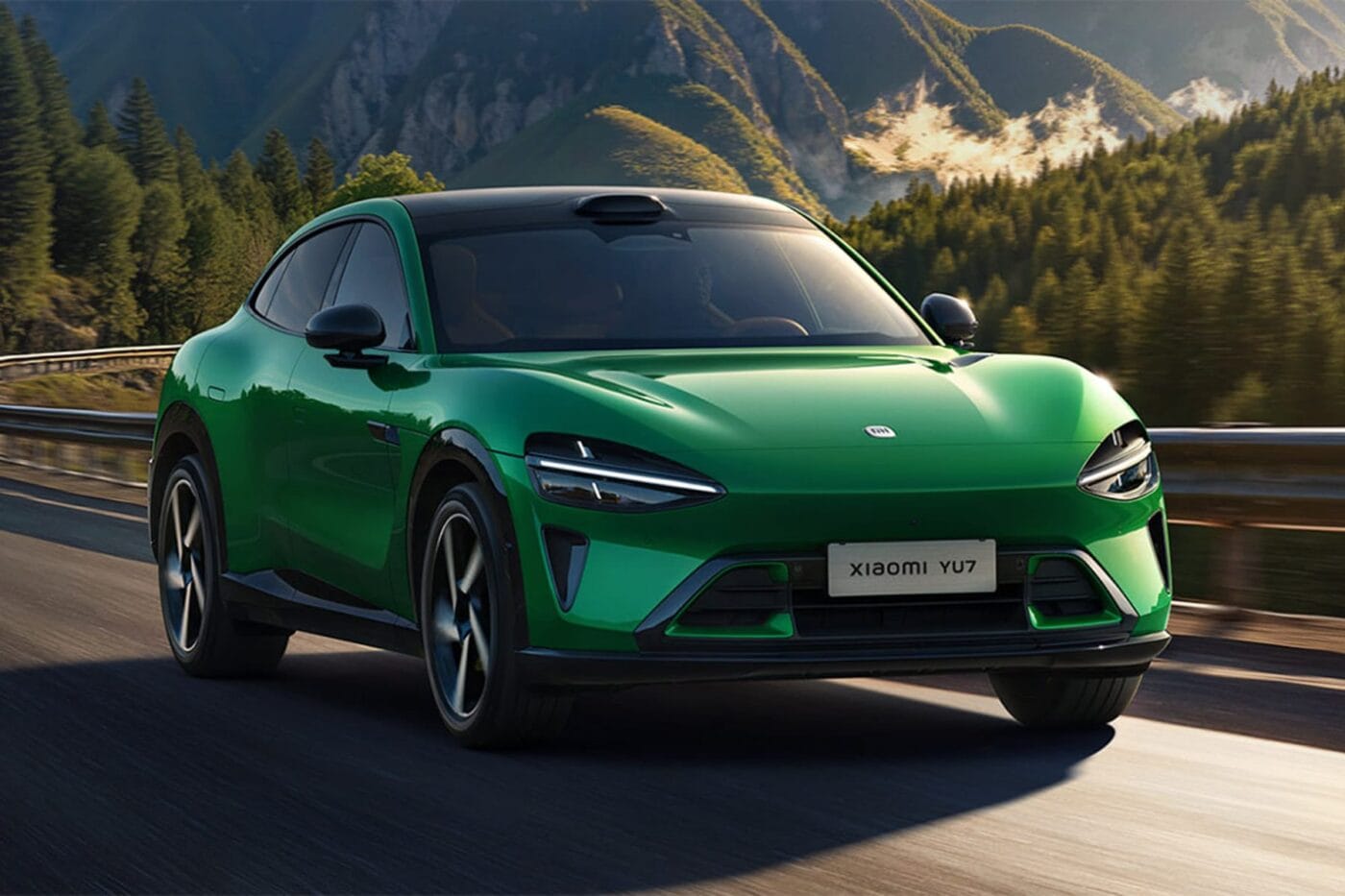China reaches new EV records in October
1.715 million so-called New Energy Vehicles (NEVs – BEV, PHEV, EREV, and FCEV) were sold in October, an increase of 111,000 units compared with the previous record month of September 2025, representing a further rise of 6.9 per cent. Compared with the same month last year, 285,000 more NEVs were sold, corresponding to a year-on-year growth of 20 per cent.
It is important to note that the figures published by the China Association of Automobile Manufacturers (CAAM) refer to wholesale deliveries – the number of vehicles sold by Chinese manufacturers – and therefore include exports. In October, 256,000 New Energy Vehicles were exported, leaving 1.459 million NEVs for the domestic market. This still represents an increase of 12.1 per cent compared with October 2024 and 5.6 per cent more than in September. Domestic NEV sales have exceeded the previous year’s level in every month of 2025.
Battery-electric vehicles also reached a new record in October. After surpassing the one-million mark for the first time in September with 1.058 million units, October’s figure rose further to 1.109 million BEVs. This represents growth of 31.7 per cent in wholesale terms, outpacing the overall NEV segment. With 166,000 BEVs exported, just under one million new electric cars entered Chinese roads. This threshold could still be surpassed before the end of 2025.
Plug-in hybrids stagnate
Plug-in hybrids, including range-extended electric vehicles (EREV), increased by only three per cent in October, reaching 605,000 units. Although this figure represents a rise of 10.8 per cent over September and the best month of the year so far, it is only slightly above the 587,000 units recorded in October 2024. A year ago, PHEVs were China’s fastest-growing segment with an 89 per cent increase, while BEVs grew by 30.4 per cent. Since then, BEV sales have continued to climb steadily from 842,000 to over 1.1 million units, whereas plug-in hybrids have remained largely stable.
Across all powertrains, 3.322 million vehicles were sold in October, 8.8 per cent more than a year earlier and three per cent more than in September. As NEVs grew faster than the overall market, their share rose significantly to 51.4 per cent – the first time the 50 per cent threshold has been crossed. However, this figure is based on wholesale deliveries including exports. Growth compared with September (49.0 per cent) and the previous year (46.8 per cent) remains substantial.
BYD continues to face sales challenges
Of the roughly 1.7 million NEVs sold in October, 441,706 came from BYD. Although this is BYD’s best result of the year, it remains below the record levels achieved in 2024, when the company surpassed 500,000 monthly sales for the first time. Compared with September 2025, BYD sales rose by 11.5 per cent. The company’s 222,559 BEVs were up 17.4 per cent year on year, but its 214,297 plug-in hybrids were down 31.1 per cent. This marks the sixth consecutive month in which BYD’s PHEV volumes have fallen short of last year’s figures.
Tesla has not been able to benefit from the growing BEV market. After a strong September with 90,812 units, wholesale deliveries dropped to 61,497 in October. Domestic retail sales were lower as exports increased. The Model Y recorded 19,488 domestic sales – its weakest month since March – while Model 3 sales rose by 52.5 per cent to 6,518 units.
According to CN EV Post, the decline may be linked to waning demand for the China-specific long-wheelbase Model Y with six seats, launched in August. Tesla has since introduced a new rear-wheel-drive Model Y variant with the longest range in the line-up, which may boost November results.
Leapmotor overtook Tesla again in October with 70,289 vehicles, setting a sixth consecutive monthly record. A year earlier, the brand sold 38,177 units, representing an 84.1 per cent increase. So far in 2025, Leapmotor has delivered 465,805 vehicles, up 120 per cent year on year. The company plans to unveil the first model of its affordable A-series, the A10, later this month, which could drive further growth.
Xiaomi continues rapid growth
Xiaomi remains behind Tesla despite strong expansion. The newcomer sold 48,654 units of its SU7 and YU7 models in October, marking a second consecutive month above 40,000 units. The 50,000-unit threshold is expected to be reached in November. With 315,376 vehicles sold this year, Xiaomi is on track to meet its annual target of 350,000 units ahead of schedule.
Xpeng also exceeded 40,000 units for a second month, delivering 42,013 vehicles – a 76 per cent increase over October 2024. Unlike Xiaomi, Xpeng continues to expand internationally, adding seven new markets in October alone. Nio also surpassed 40,000 deliveries for the first time, with 40,397 vehicles in total. Within the group, the mid-range brand Onvo overtook Nio’s core brand, delivering 17,342 units compared with Nio’s 17,143. The premium compact Firefly contributed 5,912 units.
Within the Geely Group, the NEV brand Geely Galaxy achieved 127,476 units in October, doubling its volume year on year. The brand has surpassed one million sales in 2025. The Zeekr Group, also part of Geely, delivered 61,636 NEVs, including 21,423 Zeekr vehicles and 40,213 Lynk & Co units.
Beijing Electric Vehicle Co. (BJEV), the EV subsidiary of BAIC, doubled its October sales to 30,542 units, up 112 per cent year on year. Arcfox sales more than doubled to 23,387 vehicles, while the premium Stelato brand, a joint venture between Huawei and BAIC, reached 6,700 units.
Voyah, Dongfeng’s premium EV brand, achieved a further record with 17,218 vehicles, up 69.5 per cent from a year earlier, bringing it close to Nio’s volume.
Li Auto remains below its previous performance. The manufacturer, originally focused on range-extended models, delivered 31,767 vehicles in October, 38.25 per cent fewer than a year earlier. It marks the fourth consecutive month of lower results compared with 2023. Despite strong sales between February and May, volumes have declined steadily since mid-year.
cnevpost.com (CAAM), cnevpost.com (BYD), cnevpost.com (Tesla I), cnevpost.com (Tesla II), cnevpost.com (Leapmotor), cnevpost.com (Xiaomi), xiaopeng.com (Xpeng), nio.com (Nio), cnevpost.com (Geely), cnevpost.com (Zeekr), cnevpost.com (BJEV), cnevpost.com (Voyah), cnevpost.com (Li Auto)
This article was first published by Sebastian Schaal for electrive’s German edition.





1 Comment